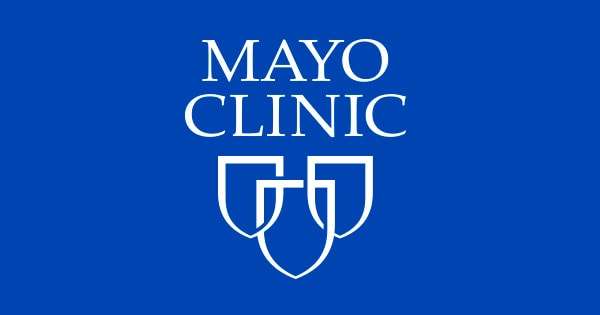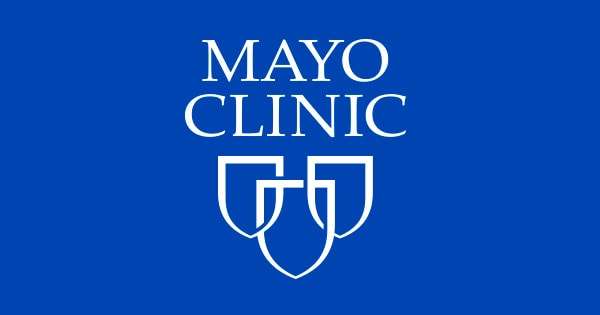Acute stress disorder is a mental health condition that can occur immediately after a traumatic event. It can cause a range of psychological symptoms and, without recognition or treatment, it can lead to post-traumatic stress disorder.
There is a close relationship between acute stress disorder (ASD) and post-traumatic stress disorder (PTSD). Some people develop PTSD after having ASD.
According to the United States Department of Veterans Affairs, approximately 19 percent of people will develop ASD after experiencing a traumatic event. Everyone responds to traumatic events differently, but it is important to be aware of the potential physical and psychological effects that can occur afterward.
In this article, we discuss what ASD is and its symptoms and causes. We also cover diagnosis, treatment, and prevention.
What is ASD?

Share on Pinterest
Experiencing psychological distress, following a traumatic event, is a sign of ASD.
ASD is a relatively new psychological diagnosis. The American Psychiatric Association first introduced it to the fourth edition of the Diagnostic and Statistical Manual of Mental Health Disorders in 1994.
Although it shares many of the same symptoms as PTSD, ASD is a distinct diagnosis.
A person with ASD experiences psychological distress immediately following a traumatic event. Unlike PTSD, ASD is a temporary condition, and symptoms typically persist for at least 3 to 30 days after the traumatic event.
If a person experiences symptoms for longer than a month, a doctor will usually assess them for PTSD.
Symptoms
People who have ASD experience symptoms similar to those of PTSD and other stress disorders.
ASD symptoms fall under five broad categories:
- Intrusion symptoms. These occur when a person is unable to stop revisiting a traumatic event through flashbacks, memories, or dreams.
- Negative mood. A person may experience negative thoughts, sadness, and low mood.
- Dissociative symptoms. These can include an altered sense of reality, a lack of awareness of the surroundings, and an inability to remember parts of the traumatic event.
- Avoidance symptoms. People with these symptoms purposefully avoid thoughts, feelings, people, or places that they associate with the traumatic event.
- Arousal symptoms. These can include insomnia and other sleep disturbances, difficulty concentrating, and irritability or aggression, which can be either verbal or physical. The person may also feel tense or on guard and become startled very easily.
People with ASD may develop additional mental health disorders, such as anxiety and depression.
Symptoms of anxiety include:
- feeling a sense of impending doom
- excessive worrying
- difficulty concentrating
- fatigue
- restlessness
- racing thoughts
Symptoms of depression include:
- persistent feelings of hopelessness, sadness, or numbness
- fatigue
- crying unexpectedly
- loss of interest in activities that were once pleasurable
- changes in appetite or body weight
- thoughts of suicide or self-harm
Causes
Share on Pinterest
Traumatic events, such as the death of a loved one, can cause a person to develop ASD.
People can develop ASD after experiencing one or more traumatic events. A traumatic event can cause significant physical, emotional, or psychological harm.
Among others, possible traumatic events can include:
- the death of a loved one
- the threat of death or serious injury
- natural disasters
- motor vehicle accidents
- sexual assault, rape, or domestic abuse
- receiving a terminal diagnosis
- surviving a traumatic brain injury
Risk factors
A person can develop ASD at any point in their life. However, some people may have a higher risk of developing this condition.
Factors that can increase an individual’s risk of developing ASD include:
- previously experiencing, witnessing, or having knowledge of a traumatic event
- a history of other mental health disorders
- a history of dissociative reactions to past traumatic events
- being younger than 40 years old
- being female
Diagnosis
A doctor or mental health professional can diagnose ASD. They will ask questions about the traumatic event and the person’s symptoms.
A healthcare professional will usually diagnose ASD if a person develops nine or more ASD symptoms within 1 month of the traumatic event. Symptoms that appear after this time frame or persist longer than 1 month may indicate PTSD.
To diagnose ASD, a healthcare professional will also rule out other possible causes, such as:
- other psychiatric disorders
- substance use
- underlying medical conditions
Treatment
Share on Pinterest
Practicing mindfulness-based techniques can help manage stress and anxiety.
A healthcare professional will work closely with a person to develop a treatment plan that meets their individual needs. Treatment for ASD focuses on reducing symptoms, improving coping mechanisms, and preventing PTSD.
Treatment options for ASD may include:
- Cognitive behavioral therapy (CBT). Doctors usually recommend CBT as the first-line treatment for people with ASD. CBT involves working with a trained mental health professional to develop effective coping strategies.
- Mindfulness. Mindfulness-based interventions teach techniques for managing stress and anxiety. These can include meditation and breathing exercises.
- Medications. A healthcare professional may prescribe antidepressants or anticonvulsants to help treat a person’s symptoms.
Prevention
It is not always possible to avoid experiencing traumatic events. However, there are ways to reduce the risk of developing ASD afterward.
These can include:
- consulting a doctor or mental health professional following a traumatic event
- seeking support from family and friends
- getting treatment for other mental health disorders
- working with a behavioral coach to develop effective coping mechanisms
- getting preparation training if a person’s job involves a high risk of exposure to traumatic events
Summary
ASD is not an uncommon condition, and it can occur after a person experiences a traumatic event. People whose occupation exposes them to traumatic events have a higher risk of developing ASD.
ASD has a close relationship with PTSD and shares many of the same symptoms. However, ASD is a short-term condition that typically resolves within a month, whereas PTSD is a chronic condition. If a person has symptoms of ASD for longer than a month, a doctor may assess the person for PTSD.
Treatment aims to reduce symptoms and help a person develop effective coping strategies. Options include CBT, mindfulness techniques, and medications.
Reaching out to friends, family, and community support groups can also help a person process their feelings and move on with their life following a traumatic event.
Acute stress disorder is a psychological condition that is caused by experiencing a traumatic event. This traumatic event might have happened to you directly, for instance being involved in a car accident, or you might have witnessed it happen to a close friend or family member.
Between approximately 14% and 33% of people who experience a severely traumatic event develop acute stress disorder.
This condition typically lasts for about a month; however, if its symptoms linger for longer than a month, it’s classified as post-traumatic stress disorder (PTSD). This means that in some instances, acute stress disorder could be viewed as a precursor to PTSD. By some estimates, around half of the people diagnosed with acute stress disorder are likely to develop PTSD.
The symptoms of acute stress disorder and PTSD are very similar. The best way to tell them apart is by observing the time frame it takes for the symptoms to show. While with acute stress disorder, symptoms might start to show between three days to one month after the traumatic event occurred, with PTSD, it’s longer.
Symptoms of Acute Stress Disorder
Symptoms of acute stress disorder are very similar to symptoms of PTSD. In general, they tend to fall under these categories:
Intrusion Symptoms
These are symptoms that invade your mind with no warning and can prevent you from functioning.
They include:
- Having flashbacks of the traumatic event
- Having recurring dreams and nightmares about the traumatic event
- Exhibiting signs of mental distress in response to the traumatic event
Avoidance Symptoms
Symptoms of avoidance typically include:
- Avoiding any thoughts or memories of the traumatic event
- Avoiding people or places that might remind you of the traumatic event. Doing this often leads to self-isolation.
Dissociative Symptoms
These symptoms are characterized by emotional detachment.
Some examples include:
- Experiencing dissociative amnesia (a condition in which you can’t recall some information)
- Feeling detached from your emotions
Arousal Symptoms
Arousal symptoms are more physical symptoms than those in other categories. They are also more likely to interfere with your daily functioning.
Some include:
- Finding it difficult to fall asleep or stay asleep
- Getting distracted easily
- Reacting strongly to the smallest of triggers in environments that remind you of the traumatic event
- Being highly alert to your surroundings
- Angering easily even with little to no provocation
The Diagnostic and Statistical Manual of Mental Disorders (DSM-5) provides that you must have exhibited at least nine of the above symptoms after being exposed to a traumatic event for you to be diagnosed with acute stress disorder.
Diagnosing Acute Stress Disorder
Before you can be diagnosed with acute stress disorder your doctor or healthcare provider must first rule out any physical injury or drug/substance use as a causing factor.
According to the DSM-5, the following criteria must be met before someone is diagnosed with acute stress disorder:
- Being exposed to or witnessing a traumatic event
- Experiencing flashbacks of the traumatic events, dissociative, anxiety, arousal, and avoidance symptoms (at least 9 of the 14 symptoms in these categories are required to be present).
- Having experienced symptoms of acute stress disorder for a period lasting between three days and one month
- Symptoms should be severe enough to cause functional impairment and interfere with your usual way of life
- The symptoms are not a result of another medical condition or substance/drug/medication
Although acute stress disorder is a mental condition, it could also manifest physically. The disorder has been linked to the development of tachycardia, which simply means that your heart rate is abnormally fast. You could also present an abnormal MRI (brain imaging scan) in certain scenarios.
A physical examination and a look into your medical history will be conducted before a diagnosis of acute stress disorder can be made.
If symptoms of acute stress disorder are present for more than a month, then it’s classified as PTSD.
Causes of Acute Stress Disorder
Acute stress disorder is caused by either experiencing a traumatic event directly or witnessing a traumatic event. Some examples of traumatic events that could trigger acute stress disorder include:
- Witnessing a shooting
- Being involved in a car accident
- Fighting in a war
- Being physically or sexually assaulted
- Witnessing the sudden death of a loved one or the violent death of a stranger
- Experiencing a near-death experience
- Living through a natural disaster
Research estimates that nearly one-sixth of people who survive car accidents are likely to develop acute stress disorder. Certain risk factors also make it more likely for certain people to develop acute stress disorder. Some of the risk factors include:
- You are biologically female
- The traumatic event is very severe
- Having an avoidant personality
- Exposure to other traumatic events in the past
- Having a history of mental health conditions prior to the traumatic event
Treatment for Acute Stress Disorder
Treatment for acute stress disorder typically involves the use of medication and psychotherapy. These two forms of treatment might either be used alternatively or together, depending on the severity of your symptoms.
Psychotherapy
Cognitive-behavioral therapy (CBT) is one of the most common forms of psychotherapy used for people with acute stress disorder. It’s typically used when the person is no longer exposed to the traumatic event and is experiencing some stability in their life.
With CBT, you are taught to deal with the effects of the traumatic event and how to avoid your triggers. Additional types of effective psychotherapy include cognitive processing therapy (CPT) and prolonged exposure (PE).
Some research shows that CBT is the most effective therapy in the treatment of acute stress disorder and preventing PTSD.
Medication
The use of medication isn’t typically the first line of treatment considered when treating acute stress disorder. However, in some severe cases, it might be used alongside psychotherapy.
Medications commonly prescribed to treat symptoms of acute stress disorder include selective serotonin reuptake inhibitors (SSRIs), benzodiazepines, hydrocortisone, and propranolol.
Coping With Acute Stress Disorder
Acute stress disorder is a rather distressing condition that can disrupt your daily functioning. In some instances, if left untreated, it can develop into PTSD.
Getting an early diagnosis and seeking treatment immediately is essential to avoid this.
Here are other tips to help you cope with this condition:
- Don’t neglect your physical health. Remember to eat a balanced diet, exercise regularly, and get enough sleep.
- Surround yourself with family and loved ones. It’s essential to feel safe after a traumatic event has occurred.
Acute stress disorder is a short-term condition. This means that with the proper treatment, you may begin to feel some relief from your symptoms. Some people can even recover on their own. However, it’s advisable to seek treatment once you notice any symptoms of the condition to make sure your symptoms don’t worsen.



